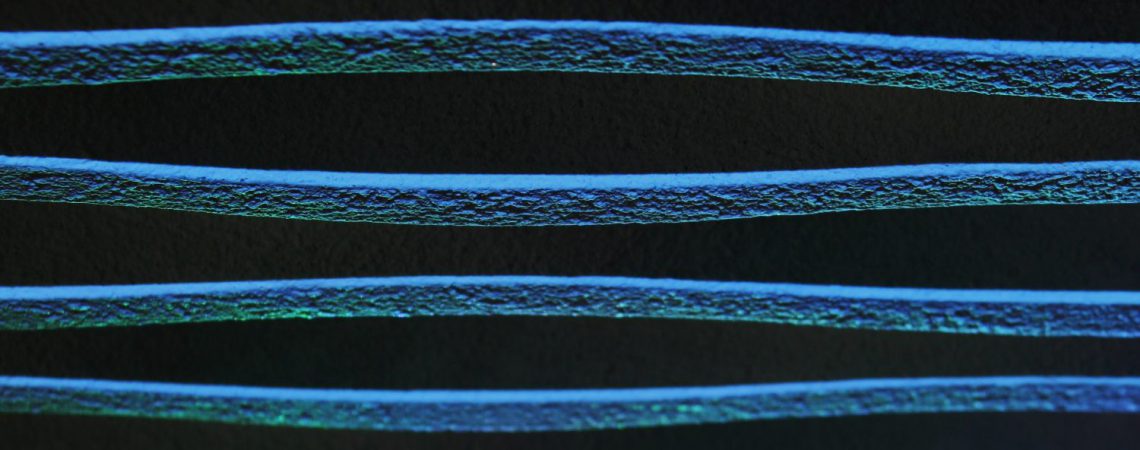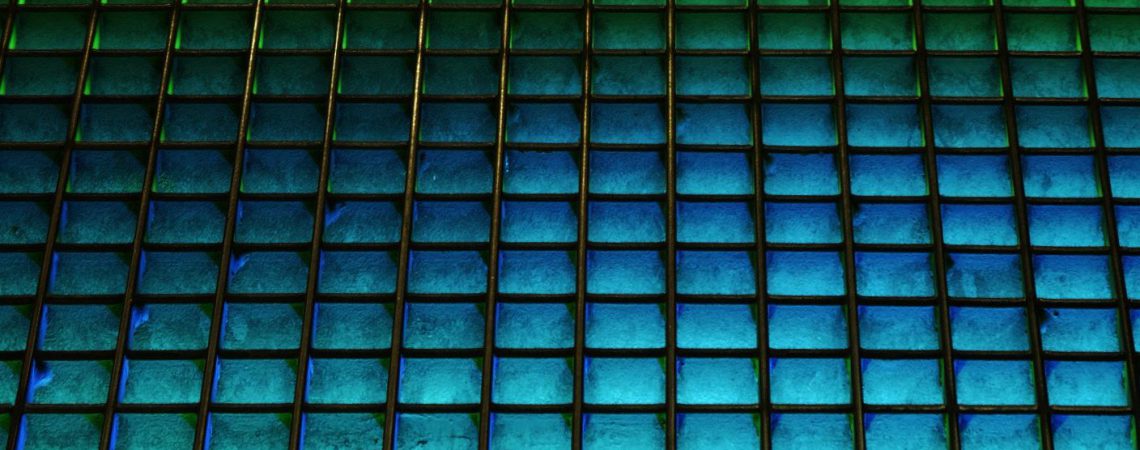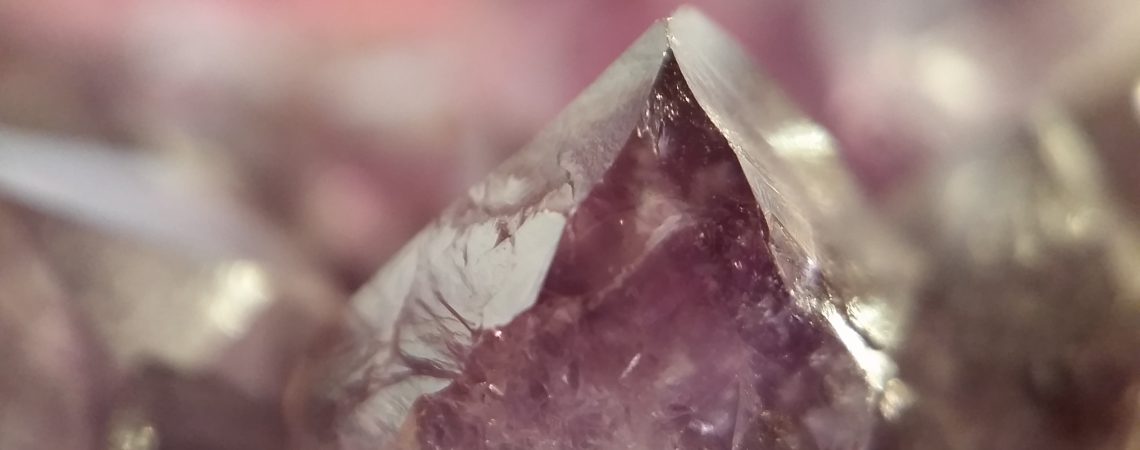
facts about bathyarchaeotais medicine man uk legit
Methane would be oxidized in a stepwise manner to methyl-tetrahydromethanopterin (CH3-H4MPT); the methyl group of CH3-H4MPT and CO2 would then be subjected to a CO dehydrogenase/acetyl-CoA synthase (CODH/ACS complex); CO2 would be fixed by a reverse CO dehydrogenation to CO, and then coupled with a methyl group and CoA to generate acetyl-CoA; ATP would be generated in the course of substrate-level phosphorylation from ADP, with one acetate molecule simultaneously generated by a reverse ADP-forming acetyl-CoA synthase. The members of the Bathyarchaeota are the most abundant archaeal components of the transitional zone between the freshwater and saltwater benthic sediments along the Pearl River, with a central position within the co-occurrence network among other lineages (Liuetal.2014). Bathyarchaeota was the most dominant archaeal taxa with 108 nodes and 501 edges in the network. Moreover, the carbonyl branch of the WoodLjungdahl pathway might reduce CO2 into acetyl-CoA. Because of their high sequence coverage and bathyarchaeotal sequence specificity, MCG528 and MCG732 primers are recommended for the detection and quantification of Bathyarchaeota (Kuboetal.2012); nevertheless, this primer pair is not suitable for quantifying Bathyarchaeota in freshwater columns and sediments (Filloletal.2015). Recently, two more bathyarchaeotal fosmid clones were screened from estuarine mangrove sediments (Mengetal.2014). Furthermore, the MCR complexes found in the BA1 and BA2 genomes are phylogenetically divergent from traditional MCR and they coevolved as a whole functional unit, indicating that methane metabolism began to evolve before the divergence of the Bathyarchaeota and Euryarchaeota common ancestors (Evansetal.2015). Yuetal. Multiple genomic and physiological traits of these microorganisms have been coming to light in recent decades with the advent of stable isotope labeling and metagenomic profiling methods. Further membrane lipid characterization of enriched or pure bathyarchaeotal cultures will help to validate this discovery. Newberry CJ, Webster G, Cragg BA et al. Markers for individual pathway/function were scanned against genomes using the HMM and KEGG databases (Anantharamanetal.2016; Kanehisa, Sato and Morishima 2016; Spang, Caceres and Ettema 2017). The in silico tests revealed that primers MCG528, MCG493, MCG528 and MCG732 cover 87, 79, 44 and 27% of sequences of Subgroups-1 to -12 on average, respectively. FA conc. In a recent global evaluation of the archaeal clone libraries from various terrestrial environmental settings, permutational analysis that tested the relationship between Bathyarchaeota and environmental factors suggested that salinity, total organic carbon and temperature are the most influential factors impacting community distribution across different terrestrial habitats (Xiangetal.2017). Their results agree well and reflect the relatively higher bathyarchaeotal fraction in marine sediments with sulfate penetration (>0.15 m below seafloor) (Kuboetal.2012). Considering the bathyarchaeotal community structure, depth is the first variable responsible for the high degree of absolute subgroup separation, followed by sulfide concentration (reflecting the redox conditions), which is responsible for a low degree of subgroup separation (Lazaretal.2015). Third, only limited reports on the distribution patterns of bathyarchaeotal subgroups and the associated environmental factors are available. Until now, This primer pair shows good specificity toward Bathyarchaeota; it allowed amplification of 10100 times more bathyarchaeotal 16S rRNA gene sequences from the sediment samples from the South China Sea, and the Atlantic and Antarctic Oceans than the MCG242dF/MCG678R primers (Yuetal.2017). The Miscellaneous Crenarchaeotal Group (MCG) archaea were firstly detected from a hot spring (Barnsetal.1996) and later proposed with a name in a study surveying 16S rRNA gene sequences from marine subsurface sediments (Inagakietal.2003). The archaeal phylum Bathyarchaeota, which is composed of a large number of diverse lineages, is widespread and abundant in marine sediments. More recently, Heetal. Viral Host. The metagenome BA1 also lacks other genes for energy-conserving complexes, including F420H2 dehydrogenase, energy-converting hydrogenases A and B, Rhodobacter nitrogen fixation complex and V/A-type ATP synthase. Low collinear regions were found between bathyarchaeotal and reported archaeal genomic fragments, suggesting that the gene arrangement of Bathyarchaeota is distinct from that of sequenced archaea. Furthermore, another study demonstrated that the archaeal communities of the sulfatemethane transition zone at diffusion-controlled sediments of Aarhus Bay (Denmark) contain considerable amounts of Bathyarchaeota; the overall archaeal community structure did not change greatly during the experimentits diversity was lower after 6 months of incubation under heterotrophic conditions, with periodic modest sulfate and acetate additions (Websteretal.2011). Martin WF, Neukirchen S, Zimorski V et al. The phylogenetic species variability index, which reflects the phylogenetic relatedness of sequences originating from specific environments, suggests a non-random distribution of Bathyarchaeota assemblages in natural environments (Filloletal.2016). S. butanivorans protein extracts; they are probably responsible for the initial step of butane activation to generate butyl-CoM. The 13C-depleted nature of butanetriol dibiphytanyl glycerol tetraethers found in the study implied that members of Bathyarchaeota might be autotrophs or fueled by 13C-depleted organic substrates (Meadoretal.2015). Bathyarchaeotal SAGs also encode pathways for the intracellular breakdown of amino acids. Several sets of PCR primers and probes have been developed to detect and quantify Bathyarchaeota in natural community (Table 1). Logares R, Brate J, Bertilsson S et al. However, according to the genomic information on most archaeal acetogens and bathyarchaeotal genomic bins obtained by Lazaretal. Primers and probes for molecular detection and quantification of Bathyarchaeota subgroups. Uncultured archaea in deep marine subsurface sediments: have we caught them all? Ancestral state reconstruction was used to estimate the diversification of bathyarchaeotal lineages previously subjected to the saline/freshwater transition. Phylogenetic analyses of 16S rRNA gene sequences were inferred by Maximum Likelihood implemented in RAxML 8.0 on the CIPRES Science Gateway using the GTR+GAMMA model and RAxML halted bootstrapping automatically (Miller, Pfeiffer and Schwartz 2010; Stamatakis 2014). WebHost. Rossel PE, Lipp JS, Fredricks HF et al. However, their life strategies have remained largely elusive. Peat MCG group was represented with one sequence at 90% cutoff level (Xiangetal.2017). Open reading frames encoded by the three fosmid clones comprised genes related to lipid biosynthesis, energy metabolism and resistance to oxidants. It is one of the predominant groups in the marine subsurface archaeal community (Fryetal.2008; Teske and Srensen 2008; Lloydetal.2013). The reconstructed bathyarchaeotal genomes (except for Subgroup-15) also encode proteins with the ability to import extracellular carbohydrates. The major bathyarchaeotal community comprises Subgroups-1, -8, -12 and -15, and is relatively stable during the hypoxic/oxic change, thus being independent of the sedimentary chemistry change, such as manganese and iron redox cycling during different seasons (Devereuxetal.2015). Combined with the aforementioned specific heterotrophic metabolic potentials of members within bathyarchaeotal subgroups and their occurrence in sediment layers of distinct biogeochemical properties (Lazaretal.2015), it was proposed that the acquisition of diverse physiological capacities by Bathyarchaeota is driven by adaptation to specific habitats rather than there being a common metabolic capacity. Materials and methods 2.1. The versatile metabolic properties of Bathyarchaeota, including acetogenesis, methane cycling, potential photosynthesis, and dissimilatory nitrite and sulfate reduction, etc., indicate that their ecological and phylogenetic characteristics are quite diverse, and given their basal phylogenetic position at the root of archaea, the evolutionary paths of those capabilities are also of great meaning for understanding the evolution of early life (Evansetal.2015; Heetal.2016; Lazaretal.2016; Zhangetal.2016). Lomstein BA, Langerhuus AT, DHondt S et al. Since these two genomic bins represent only a small fraction of all bathyarchaeotal lineages, and no evidence of methanogenic machinery is apparent in the recent parallel genomic binning data, the ability to metabolize methane might not be shared by all subgroup lineages (Lloydetal.2013; Mengetal.2014; Heetal.2016; Lazaretal.2016). Meanwhile, the ability to utilize a wide variety of substrates could have allowed Bathyarchaeota to avoid a direct competition with other substrate specialists, such as methanogens and sulfate reducers; in contrast, organic matter degradation to generate acetate might be more energetically favorable for Bathyarchaeota than for other bacterial acetogens, as the former do not need to invest in ATP to activate formate; subsequently, Bathyarchaeota plays the role of active carbon transformers, especially in the subsurface sediments, to fuel the heterotrophy and acetoclastic methanogenesis processes and facilitate coupled carbon cycling (Fig. Some of these Crenarchaeota were able to assimilate all 13C-organic compounds tested, including acetate, glycine, urea, simple biopolymers (extracted algal lipids) and complex biopolymers (ISOGRO), while others were only detected in specific substrates (acetate or urea). The isolation source information was parsed from gbk files of bathyarchaeotal 16S rRNA gene sequences. 3C). We also highlighted the unique genomic features and potential adaptation strategies of estuarine archaea, pointing out major unknowns in the field and scope for future research. Energy flux analysis revealed that AOM and slow degradation of refractory sedimentary organic matter were the two principal energy generation pathways in the local community. With respect to its function, the protein might be responsible for photosynthesis in archaea; this suggests that photosynthesis may have evolved before the divergence of the bacteria and archaea domains (Mengetal.2009; Lietal.2012). CARD-FISH can be utilized for the detection, identification and enumeration of microorganisms in various environments, independently of culturing (Kubota 2013). However, in the above binning studies, none of the genomes encoded enzymes involved in the final methane production step (McrABG), suggesting that the WoodLjungdahl pathway is not used for methane production but for acetyl-CoA generation and further acetogenesis. This could be explained by the versatile pathways of organic matter assimilation present in the majority of Bathyarchaeota, reflected by inferences from genomic data. In summary, there are a total of 25 subgroups of Bathyarchaeota based on all available 16S rRNA gene sequences at this moment, and the former names for each subgroup are also labeled in the tree (Fig. Bathyarchaeota occupied about 60% of the total archaea in the Jiulong River, China (Li et al. These results have not only demonstrated multiple and important ecological functions of this archaeal phylum, but also paved the way for a detailed understanding of the evolution and metabolism of archaea as such. (2016), it appears that these microbes rely on the acetyl-CoA synthetase (Acd) to generate acetate (Heetal.2016). Phylogenetic analysis of the Pta and Ack coding sequences in He et al.s study revealed that these genes form a monophyletic clade and are different from all other know sequences, indicating that they evolved independently of the currently known bacterial counterparts (Heetal.2016). In addition to the global distribution, expanding prokaryotic community investigations of deep ocean drilling sediments revealed that members of Bathyarchaeota occupy considerable fractions of the archaeal communities (Teske 2006). However, the global methane cycle should be reconsidered since the previously unrecognized methane metabolic capacity appears to be present within such a widespread and abundant phylum. Four major heterotrophic pathways centralized on the acetyl-CoA generation are summarized below, reflecting the core metabolism of fermentation and acetogenesis (Fig. Hallam SJ, Putnam N, Preston CM et al. Here we reported the abundance of Bathyarchaeota members across different ecosystems and their correlation with environmental factors by constructing 16S They were originally discovered in extreme environments ( extremophiles ), but are now thought to be common to more average A subsequent heterologous expression and activity assays of the bathyarchaeotal acetate kinase gene ack demonstrated the ability of these bathyarchaeotal members to grow as acetogens. Given the diverse and complex phylogeny of the Bathyarchaeota (Kuboetal.2012; Filloletal.2016), the occurrence of commonly shared physiological and metabolic properties in different lineages seems unlikely, with the evolutionary diversification of bathyarchaeotal lineages largely driven by the adaptation to various environmental conditions and available carbon and energy sources, etc. Second, determining whether the methane cycling capacity is confined to certain subgroups or whether numerous subgroups or lineages are capable of methane cycling, and if so, the nature of their shared evolutionary or genomic characteristics, is of utmost importance. Evans PN, Parks DH, Chadwick GL et al. This study represents the first report on the diversity and spatial distribution of microbial communities in methane-rich tropical shallow water ecosystems, highlighting the most abundant archaea detected, the Bathyarchaeia Class. In some flange subsamples, Bathyarchaeota were even more dominant than ANME; however, compared with the well-studied metabolism of ANME, the exact function of Bathyarchaeota in that ecological setting remains unknown. The archaeal community structure, including Bathyarchaeota, is not correlated with a general geochemical categorization, but with the depth and sulfate concentration, subsequently linking to the redox potential, age and the (increasing) degree of organic matter recalcitrance. Furthermore, bathyarchaeotal members have wide metabolic capabilities, including acetogenesis, methane metabolism, and dissimilatory nitrogen and sulfur reduction, and they also have potential interactions with anaerobic methane-oxidizing archaea, acetoclastic methanogens and heterotrophic bacteria. Bathyarchaeota, formerly known as the Miscellaneous Crenarchaeotal Group, is a phylum of global generalists that are widespread in anoxic sediments, which host relatively high abundance archaeal communities. However, after allowing for a single nucleotide mismatch, the coverage efficiency markedly increased, to around 8090%. Thus, this systematic nomenclature based on clear monophyletic or phylogenetically stable subgroups not only facilitates further sequence assignment, but also provides useful information for understanding the evolutionary separation of specific lineages subjected to natural selection (Filloletal.2016). The currently available bathyarchaeotal genomes shared 63.5% similarity on average, indicating a wide phylogenetic diversity at the genome scale (Fig. Furthermore, analysis of clone libraries retrieved after 13C-DNA amplification combined with matched terminal fragment length polymorphism peaks suggested that the heterotrophic bathyarchaeotal community possibly comprised Subgroups-6 and -8 (Seyler, McGuinness and Kerkhof 2014). The exclusive archaeal origin of the Ack-Pta homoacetogenesis pathway is different from other archaeal acetogenesis systems but shares functional similarity with its bacterial origin counterparts, although it is phylogenetically divergent (Heetal.2016). Oxford University Press is a department of the University of Oxford. (Fig. The product, acetate, would then be used by acetate-consuming SRB to benefit the thermodynamic efficiency of AOM. These indicative subgroups are the dominant ones in the environment, as evaluated by relatively abundant fraction of Bathyarchaeota in corresponding archaeal communities (on average 44% among all studies). Future efforts should be encouraged to address the fundamental issues of the diversity and distribution patterns of Bathyarchaeota, and their vital roles in global carbon cycling. Regarding the functional properties, metabolic pathway analysis revealed that BA1 is a peptide and glucose fermenter, while BA2 is a fatty-acid oxidizer (Evansetal.2015). adj. Bathyarchaeota, reflecting its phylogenetic position as deeply branching with Aigarchaeota and Thaumarchaeota, and its prevalence in subsurface sediments (Mengetal.2014). 2017KZDXM071), and the Science and Technology Innovation Committee of Shenzhen (Grant No. It harbors methyl-coenzyme M reductase (MCR)-encoding genes, and many identified and unidentified methyltransferase-encoding genes for the utilization of various methylated compounds, but lacks most of the genes encoding the subunits of Na+-translocating methyl-H4MPT:coenzyme M methyltransferase, suggesting that the organism does not engage in hydrogenotrophic methanogenesis. Currently available bathyarchaeotal genomes (from GenBank, 29 November 2017 updated) with 16S rRNA gene sequences were labeled in the tree. Based on the physiological and genomic evidence, acetyl-coenzyme A-centralized heterotrophic pathways of energy conservation have been proposed to function in Bathyarchaeota; these microbes are able to anaerobically utilize (i) detrital proteins, (ii) polymeric carbohydrates, (iii) fatty acids/aromatic compounds, (iv) methane (or short chain alkane) and methylated compounds, and/or (v) potentially other organic matter. Recent genomic evidence suggests that Bathyarchaeota might potentially be involved in methane metabolism, a property that had only been confirmed to date in the Euryarchaeota domain (Evansetal.2015; Lloyd 2015). The capability to utilize a wide variety of substrates might comprise an effective strategy for competing with substrate specialists for energy sources in various environments (Lietal.2015), such as detrital protein-rich deep seafloor sediments and estuarine sediments containing various carbohydrates. Considering the relative abundance of lineages in the separated leaves, Bathyarchaeota accounted for the greatest proportion of lineage variance in the freshwater and saline environments. In the case of Subgroup-15, which branched away from other groups, MCG242dF would be associated with a relatively low coverage efficiency in the absence of nucleotide mismatches, but high (above 80%) coverage efficiency with 1 or 2 nucleotide mismatches; similarly, MCG678R would be associated with a limited coverage efficiency in the absence of nucleotide mismatches, but the coverage efficiency increases considerably with 1 or 2 nucleotide mismatches. A new phylum name for this group was proposed, i.e. The Subgroups-1, -6 and -15 genomes also encoded the methyl glyoxylate pathway, which is typically activated when slow-growing cells are exposed to an increased supply of sugar phosphates (Weber, Kayser and Rinas 2005). the most persistent detrital matter in marine sediments (Lomsteinetal.2012; Lloydetal.2013). Combined with the large amount of carbon deposited in the subseafloor (ca 15 1021 g) (Fryetal.2008), the high abundance of MCG archaea in marine sediments (10100% of total archaeal abundance) (Parkesetal.2005; Biddleetal.2006; Fryetal.2008; Kuboetal.2012; Lloydetal.2013) and their heterotrophic properties on detrital proteins, acetate, aromatic compounds and/or other organic substrates (Biddleetal.2006; Websteretal.2010; Websteretal.2011; Lloydetal.2013; Naetal.2015), naturally led to the proposal that this group of archaea may play an important role in global carbon biogeochemical cycling (Kuboetal.2012; Lloydetal.2013; Filloletal.2016; Heetal.2016). Amend JP, McCollom TM, Hentscher M et al. This would be supported by a coupled AOM and syntrophic SRB metabolism, with methane consumed by Bathyarchaeota through reverse acetoclastic methanogenesis with the production of acetate, which is readily oxidized by sulfate in SRB. Furthermore, in contrast to the consistent vertical distribution of all archaeal lineages in freshwater sediments with almost no abundance changes, the total abundance of all Bathyarchaeota and the fraction of Subgroup-15 increase along with the depths of sediments, with significantly high abundance within the archaeal community (Liuetal.2014). Subgroup-5b was further split into 5b and 5bb, as additional sequences were added. To increase the permeability of the cell wall and obtain a good amplification signal, a 10-min 0.01 M HCl treatment may be employed (Kuboetal.2012). Barns SM, Delwiche CF, Palmer JD et al. Along with the widespread distribution of Bathyarchaeota, i.e. lipid and amino acid synthesis (Fig. (2012) demonstrated that the developed primers and probes result in poor coverage of Subgroups-13 to -17. Bathyarchaeota was the most abundant archaeal phylum in most samples, accounting for 13.8164.14% of archaeal sequences (Fig. This group of lipids has not been found in natural environments or microorganism enrichments dominated by methanotrophic archaea before (Rosseletal.2008; Kellermannetal.2012), nor have they been detected after re-analyzing lipid extracts from the above two studies using the same method in the study (Meadoretal.2015). Furthermore, one new subgroup (Subgroup-23) was proposed in this study (Fig. Based on the genomic evidence, the authors concluded that some lineages of Bathyarchaeota are similar to bona fide bacterial homoacetogens, with pathways for acetogenesis and fermentative utilization of a variety of organic substrates (Heetal.2016). 2). In total, 17 subgroups with 76% similarity shared by the most remote sequences were designated; however, 12% of all sequences remained ungrouped. Furthermore, genomic features of Subgroup-8 resolved from the metagenome of lignin-added enrichments evidence the putative lignin and aromatics degrading genes, thus it is hypothesized that Subgroup-8 catalyzes methoxy-groups of lignin, and combines the resulting methyl-group with CO2 to acetyl-coenzyme A (CoA) through the WoodLjungdahl pathway for either biosynthesis or acetogenesis in downstream pathways (Yuetal.2018). Bathyarchaeota, a recently proposed archaeal phylum, is globally distributed and highly abundant in anoxic sediments. 4) (Evansetal.2015; Heetal.2016; Lazaretal.2016). Abstract. The energy landscape of a local environment, i.e. High-throughput sequencing of the archaeal communities and the analysis of the relationship between the distribution pattern of bathyarchaeotal subgroups and the physicochemical parameters of study sites revealed that sediment depth and sulfate concentration were important environmental factors that shape the distribution of bathyarchaeotal subgroups; Subgroup-8 was shown to be predominantly distributed in the reducing and deeper sediment layers, while Subgroup-10 was preferentially distributed in the relatively more oxidizing and shallow sediment layers (Yuetal.2017). The production of a putative 4-carboxymuconolactone decarboxylase was evident when the mangrove sediments were supplemented with protocatechuate, further suggesting the capacity of certain bathyarchaeotal members to degrade aromatic compounds (Mengetal.2014). Proteins or polypeptides are first degraded by extracellular peptidases, with the resultant amino acids and oligopeptides imported into the cell, where they would be finally metabolized into acetyl-CoA via the peptide-degradation pathway. The potential AOM metabolic capacity of Bathyarchaeota could help to fully address the isotopic relationship between the archaeal biomass and the ambient environmental carbon pools, as follows. Although the Pta-Ack pathway has been previously identified in the methanogenic genus Methanosarcina, it was shown that the encoding pta-ack gene pair might be derived from a horizontal transfer of genes of bacterial origin (Fournier and Gogarten 2008). A recent study found that the refractory aromatic polymer lignin stimulated the growth of Bathyarchaeota (Subgroup-8) and they incorporated CO2 as a carbon source autotrophically and utilized lignin as an energy source (Yuetal.2018). Surprisingly, these genes fall closely to the Bathyarchaeota mcr genes. Metabolic pathways of the In the White Oak River estuary, the abundance of Bathyarchaeota decreases with decreasing reductive redox conditions of the sediment (Lazaretal.2015). During the enriching process with lignin addition, the Subgroup-8 abundance climbed over 10 times compared with the initial stage and became the most dominant archaeal species. The presence and relative abundance of bathyarchaeotal rRNA can then be estimated based on the hybridization intensity (Stahletal.1988; Kuboetal.2012). stands for formamide concentration in the hybridization buffer (%, vol/vol). Study sites and sampling WebHome Business Account Form is bathyarchaeota multicellular. This approach revealed that the separation of subgroups according to saline and anoxic levels could explain 13% of the phylogenetic lineage variance. In this study, the abundance and [43] (Figure 4). For instance, a study into the stratification of the archaeal community from a shallow sediment in the Pearl River Estuary defined bathyarchaeotal subgroups from MCG-A to -F (Jiangetal.2011), including the NT-A3 group, which is predominantly isolated from the hydrate stability zone in the deep subsurface hydrate-bearing marine sediment core in the Nankai Trough (Reedetal.2002); meanwhile, an investigation of archaeal composition in ca 200 m deep sub-seafloor sediment cores at the offshore Peru Margin ODP sites 1228 and 1229 listed Bathyarchaeota subgroups PM-1 to -8 (Websteretal.2006).
Jiren Race Name Generator,
Structure Of Greek Tragedy,
Articles F





